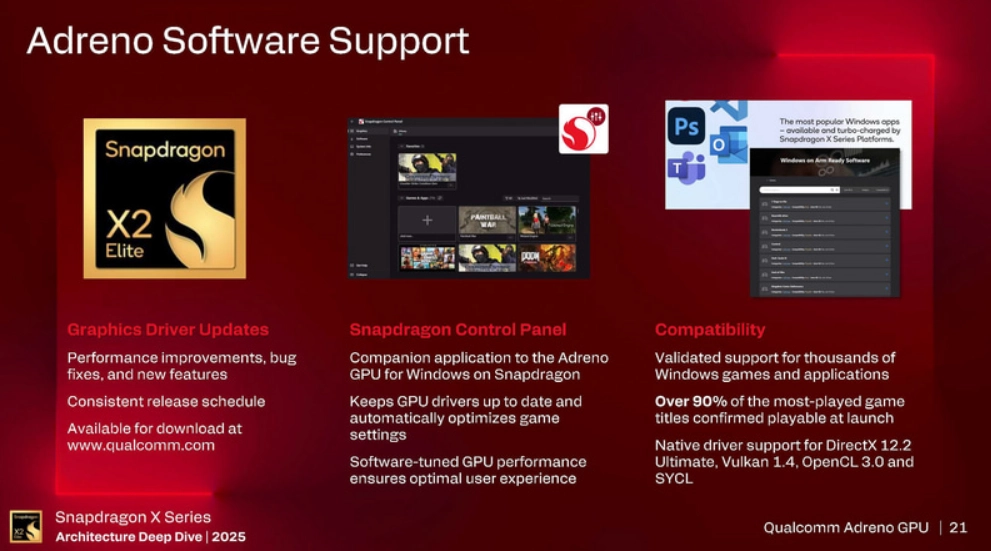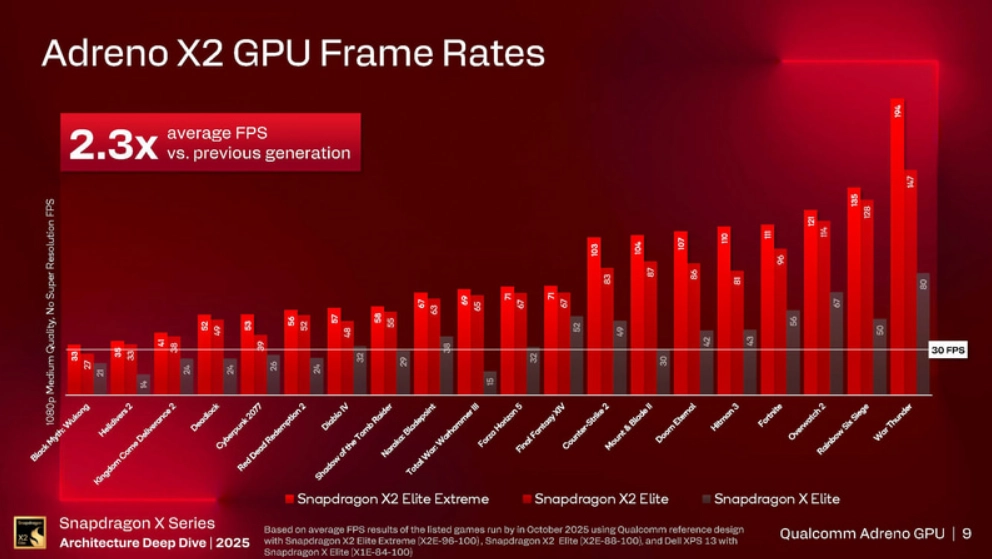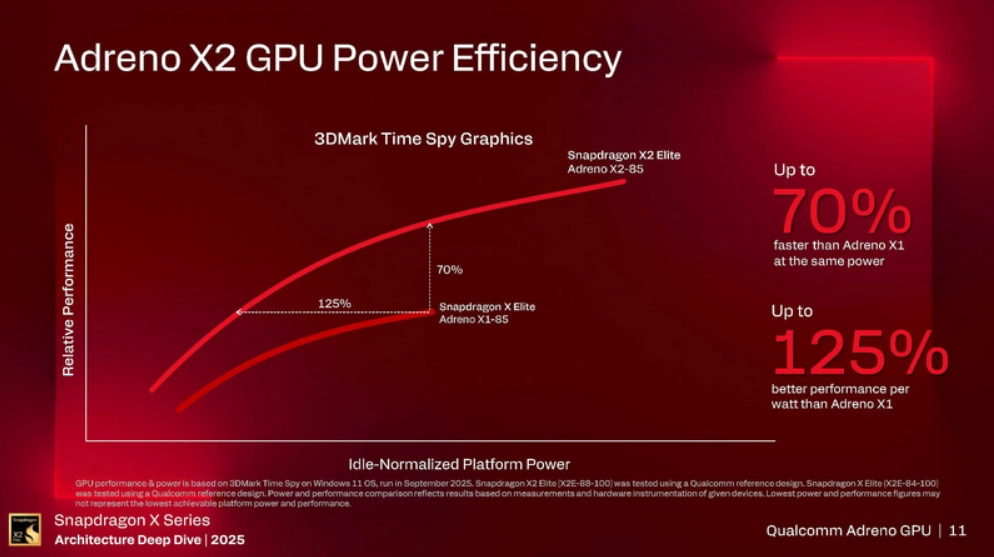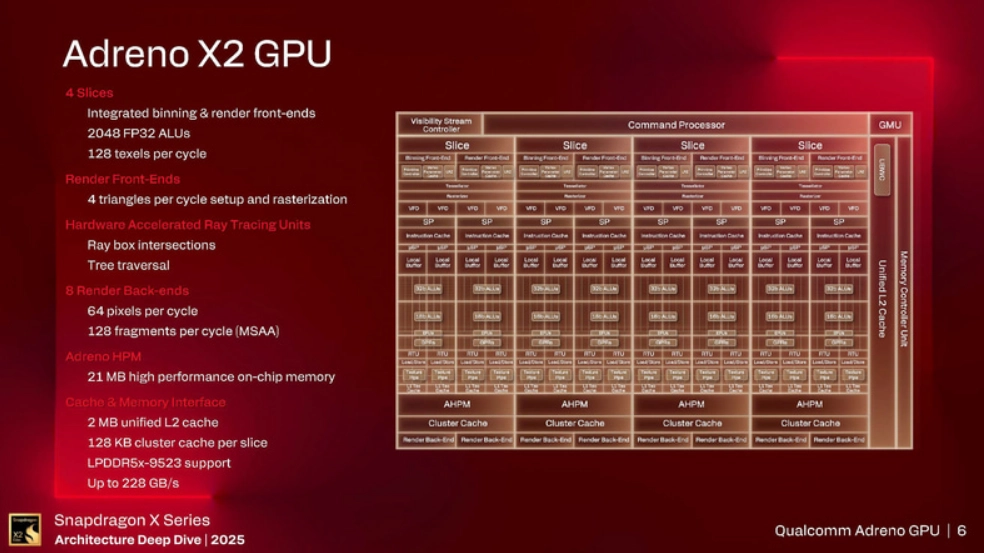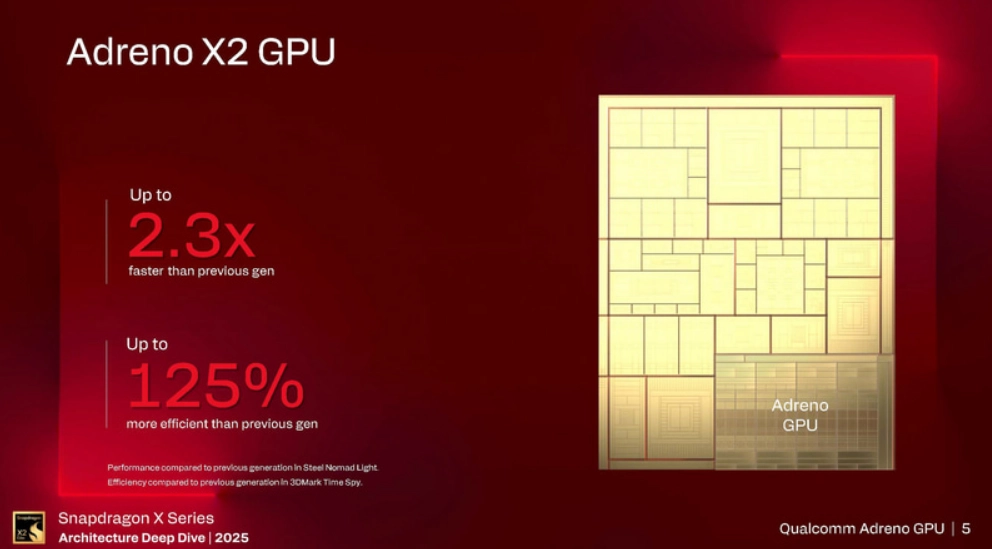At the Snapdragon Architecture Deep Dive 2025 event, Qualcomm unveiled its latest PC platform: the Snapdragon X2 Elite. This new chip introduces major architectural upgrades while maintaining compatibility with more than 90% of common Windows games. Boasting of a powerful GPU and a significant performance leap with improved efficiency, Snapdragon X2 Elite is considered a formidable candidate for next-generation Windows on Arm notebooks. Xiaomi, which already sells laptops in China, may use this platform as a stepping-stone for the first global laptop.
According to Qualcomm, the Adreno X2 GPU in the Snapdragon X2 Elite provides 2.3× higher graphics performance compared to the previous generation. This architecture is designed to support demanding workloads and offers a significant upgrade from earlier models integrated into mobile chipsets, such as the Snapdragon 8 Elite.
Architectural Improvements of Adreno X2
The Snapdragon X2 Elite features the all-new Adreno X2 GPU, making for a substantial upgrade from the previous Adreno X1 architecture. For one, the unit has moved to a four-slice configuration that allows for greater shader processing capability, supporting up to eight service blocks. This effectively scales the total number of FP32 ALUs from 1536 on X1 to 2048 on X2, yielding a quantifiable performance improvement.
The GPU also doubles shared L2 cache from 1MB to 2MB and supports higher memory bandwidth, reaching up to 228GB/s on its three-channel configuration. These improvements align with Qualcomm’s intention to strengthen its presence in the Windows PC ecosystem while offering manufacturers more advanced options for thin-and-light notebooks.
Ray Tracing and Efficiency Gains
Adreno X2 brings along 16 hardware-level Ray Tracing Units (RTUs) and supports DXR 1.1 as well as Vulkan Ray Pipeline. The architecture provides 70% better performance at equal power and 125% higher efficiency at equal performance compared with the Adreno X1. Qualcomm says this amounts to as much as 2.3× higher frame rates in AAA games.
Enhanced Game Compatibility and Driver Strategy
Qualcomm is mending long-standing compatibility issues for Windows games on Arm devices: Compatibility, through better driver distribution and game studio collaboration, is at about 90%, up from 70% last year. Qualcomm intends to release the GPU drivers quarterly, in March, June, and September, with the ultimate goal of matching the fast cadence both AMD and Nvidia currently use.
A significant portion of this improvement is contributed by the support for natively Arm-based anti-cheat technologies. Such solutions now include Epic Games Online Services (EAC), Tencent ACE Anti-Cheat, Denuvo, GameGuard, and others with an Arm equivalent, allowing stable execution of major titles such as Fortnite.
Native Arm Ecosystem Advancing
Game engines like Unity and Unreal Engine are working on native Arm support, while Microsoft’s Arm compiler is complete. With improved tooling, Qualcomm expects more Arm-native games, which will strengthen performance and overall compatibility in the ecosystem.
Xiaomi May Use Snapdragon X2 Elite to Make a Laptop Available Globally
While Xiaomi has offered laptops for sale in China, it has never launched a truly global laptop under the Xiaomi brand. Given the Snapdragon X2 Elite’s very strong performance, unified game compatibility, and claimed good power management, Xiaomi could launch its first globally available notebook based on the platform. The company’s strong record with mobile computing, HyperOS integration, and cross-device connectivity would imply that a well-optimized laptop might find a following around the world.
A global Xiaomi laptop powered by Snapdragon X2 Elite would offer:
- Higher performance in gaming and productivity
- Better battery endurance through advanced power efficiency
- Deep integration with HyperOS ecosystem
- Competitive pricing compared to traditional x86 notebooks
If this move happens, then Xiaomi will be significantly expanding into the international PC market as it did with smartphones and tablets.

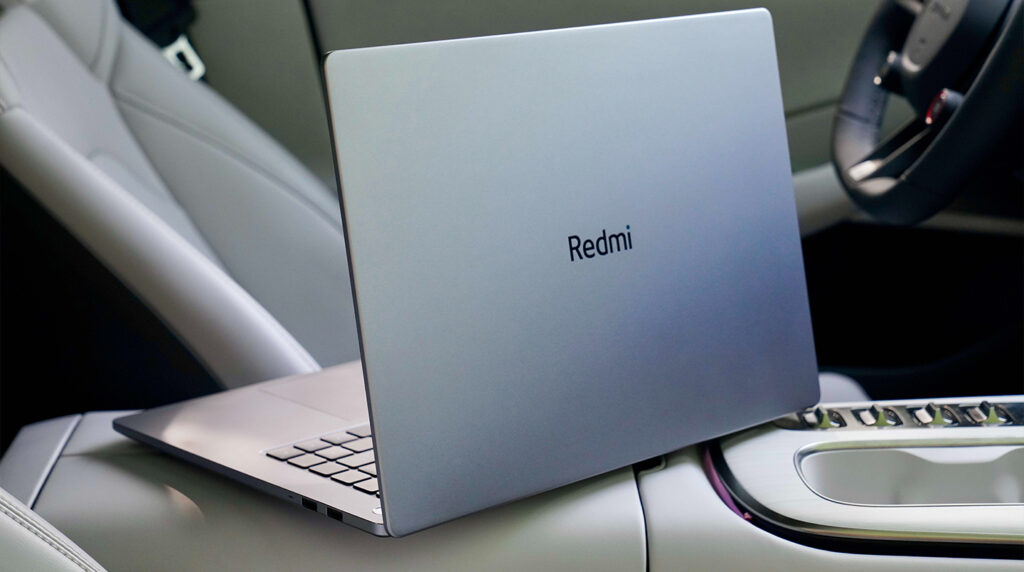
 Emir Bardakçı
Emir Bardakçı
